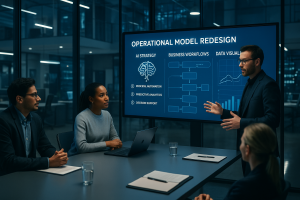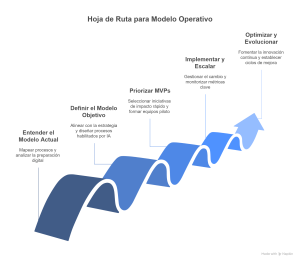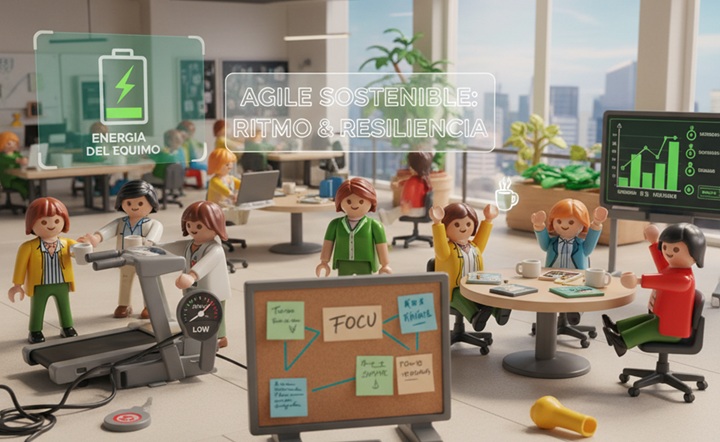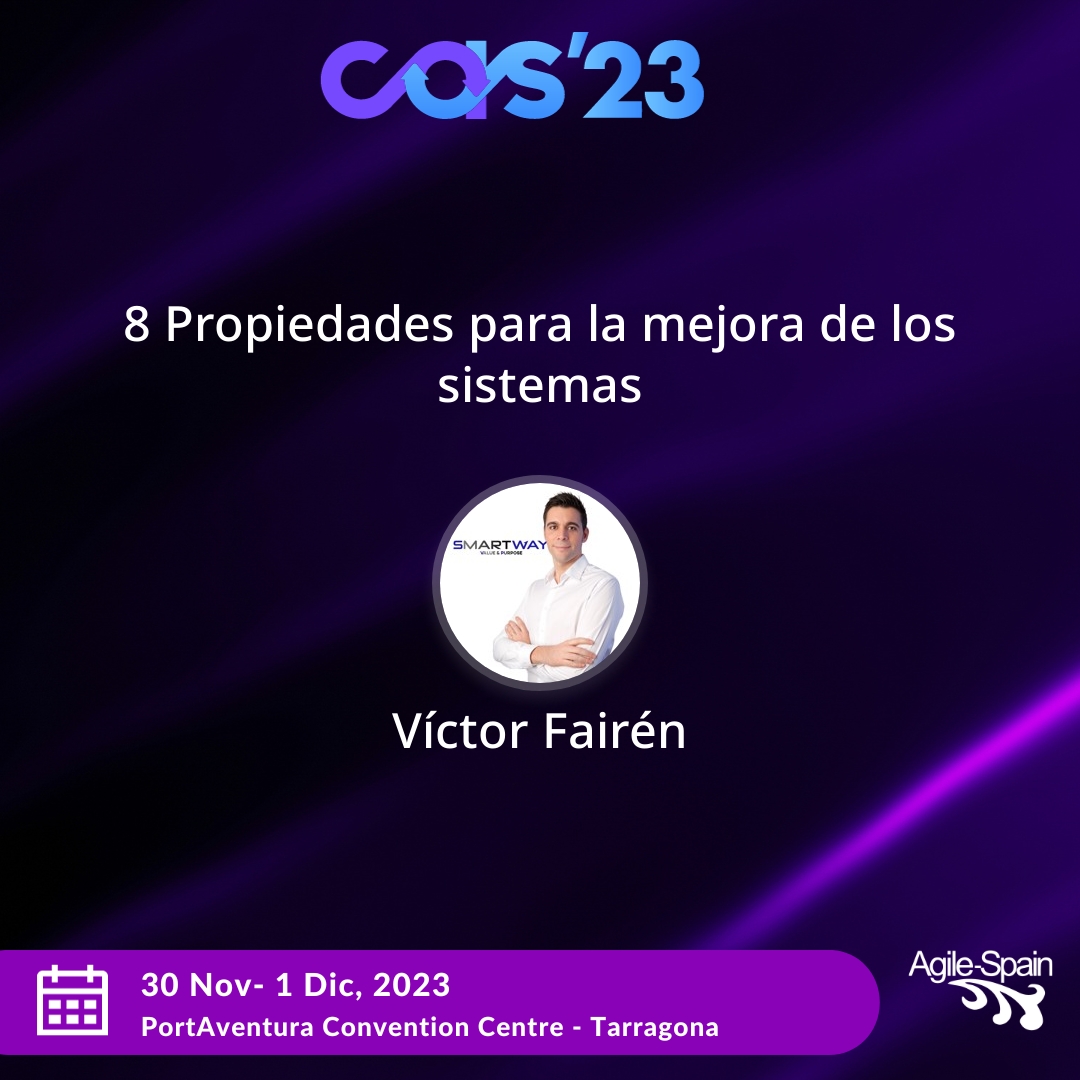
Transforming while still delivering value: who said you can’t dance and change your shoes at the same time?
I guess you’ve imagined yourself dancing and changing your shoes, no one said it was easy, but it can be done, even with some grace.
We live in exciting times. Also demanding, very demanding.
Organizational transformation with artificial intelligence has ceased to be a “nice to have” and has become an almost survival requirement. And within this great wave of change, there is a question that I am asked almost daily in workshops and sessions with managers:
“How do I redesign the operating model of the company or department by including AI, without stopping the business?”
Spoiler: it can be done. It’s not easy, but it can be done. And in this article I bring you a practical guide, designed for change leaders looking to evolve their organization without slowing down the value they are already generating.
Why redesign the operating model?
Redesigning the operating model goes beyond updating processes or implementing tools. It is about rethinking how your company works from end to end: how value is created, how decisions are made, how information flows and how your organization adapts to change.

And in a world where AI in enterprises changes the rules of the game, not redesigning your operating model is condemning you to compete in a basketball game with your hands tied.

If you don’t redesign your operating model, you compete in a basketball game… with your hands tied.
But of course, doing so without disrupting the business requires a solid and adaptable strategy. At SmartWay we help you find that balance from our organizational consulting.
Redesigning our operating model is imperative to be able to evolve efficiently as the organization delivers value. Sometimes small adjustments are necessary, sometimes… radical change with incremental iterative adoption is better.
The main challenges
Redesigning without stopping the operation presents several common obstacles:
- Organizational inertia: “We have already tried it here”, “We have always done it this way…” (a dangerous phrase if ever there was one).
- Fear of change: Loss of control, status or security. The unknown really “scares” us, so it is essential to have a good change management to accompany people on this path to the new operating model.
- Operational overload: Key people are already stretched to the limit. The day-to-day is eating up the time we could devote to transforming.
- Lack of alignment: Areas with conflicting priorities. Understanding that the transformation or working model must be end-to-end and that sub-optimization does not work is key, because we will have to face different areas with conflicting priorities.
- Ignorance of the real potential of AI: Either it is underestimated or feared.

Are you familiar with any of them? Normal. The important thing is to know that you can overcome them with the right strategy.
Principles for a redesign without stopping the business
Here are 5 principles for redesigning your operating model with AI without killing the operation.
1. Strategy first, technology second
Define first what you want to achieve. AI is a lever, not an end.
Don’t fall into the trap of starting with the trendy AI tool. First define what you want to achieve as a business. As Porter’s model rightly points out, your strategy will dictate how the operating model should be redesigned:
Looking for efficiency? Use AI to optimize processes.
Looking for differentiation? Apply AI to personalize the experience.
Looking for focus? Use AI to segment and prioritize.
Find out how we work this from our artificial intelligence consulting applied to organizations.
2. Start small, think big
Apply an incremental iterative approach (as in Agile consulting). Redesign a part of the model and scale from there. For example, customer onboarding. This way you will achieve:
- Fast learner.
- Minimize risks.
- Maintain operational pulse.
Let me share with you an example of a large insurance company I worked with. It started by redesigning just the customer onboarding process with AI. One flow. One team. Visible results in 8 weeks. Then they scaled up.

3. Agile leadership, real change
This is where Agile leadership comes into play. The leader of this type of transformation is not the one who commands, but the one who:
- It inspires a clear purpose.
- Facilitates collaboration between teams.
- Promotes continuous improvement.
- Models adaptability (the first to adapt is the leader).
And be careful: change management is not optional. If you don’t take care of the human side, you will have tools without adoption.
4. Learn in short cycles
The redesign of an operating model is a process of continuous exploration (we repeat: incremental iterative). Here, the combination of retrospectives(Agile retrospectives) and advanced analytics is very powerful:
- Retrospectives tell you what’s going on in people.
- The data tells you what is happening in the processes.
Together, they allow you to continuously adapt the transformation without slowing down the operation.
5. Transparency and Continuous Communication
In this type of transformation, lack of communication is a “silent killer”.
How to avoid it?
- Continuous communication: not only at the beginning of the project.
- Two-way communication: listen as much as you speak.
- Visual communication: use dashboards, kanbans, flow maps.
If people do not understand the “why” and the “what for”, they will resist the “how”.
Levers for redesigning your operating model with AI
Let’s get down to practicalities. Here are some key actions:
1. Intelligent Process Automation (IPA)
Beyond RPA, AI enables:
Read unstructured documents.
Understand user feedback.
Automate complex customer service.
The impact can be huge, as you free up capacity for high-value tasks.
2. Optimization of decision making
Careful here, this is not about delegating all decisions to AI, but understanding that with AI you can:
- You detect patterns invisible to humans.
- You anticipate lawsuits.
- You simulate future scenarios.
This will impact better and faster decision making.

I’ll tell you an example that I’m sure you’ve read about because it’s from a well-known brand of a retail chain that adjusts its product mix per store every week using predictive AI models. Result: +15% in sales per m2.
3. Reconfiguration of teams and roles
Redesigning the operating model involves rethinking how people work:
- New roles: prompt engineers, AI curators, transformation leaders.
- More transversal and autonomous teams.
- Development of new competencies (continuous learning is key!).
Organizational transformation with AI = cultural transformation.

We integrate this into our OKR consulting proposals to achieve focus and accountability.
4. Innovation continues to be driven by data
With AI you can:
- Detect emerging customer needs.
- Validate business hypotheses faster.
- Co-create with users.
This could fuel a robust innovation portfolio that makes your operating model more resilient and adaptable.
5 Phases for a successful redesign
I propose a roadmap in 5 phases:
Phase 1: Understanding the current model (AS-IS)
- Value stream mapping: Identify and document current processes and how value flows through them.
- Identify bottlenecks: Analyze the critical points that limit the efficiency and effectiveness of existing processes.
- Analyze digital and cultural maturity: Evaluate the level of digital readiness and organizational culture to adopt technological changes.
Phase 2: Designing the target model (TO-BE)
- Align with strategy: Ensure that the target model is aligned with the organization’s vision and strategic objectives.
- Design how AI enables new processes/capabilities: Explore how artificial intelligence can transform and improve existing processes.
- Redefine structures, roles and governance: Establish new organizational structures and roles to facilitate the implementation of the target model.
Phase 3: Prioritize MVPs
- Select quick wins: Identify initiatives that can be implemented quickly and have an immediate impact.
- Form pilot teams: Create dedicated teams to lead the implementation of the selected MVPs.
- Plan iterative deployment: Establish an agile approach to solution deployment, allowing for adjustments based on continuous feedback.
Phase 4: Implement and scale up
- Short learning cycles: Encourage experimentation and learning through short trial and error cycles.
- Monitor key metrics: Establish performance indicators to evaluate the success of the initiatives implemented.
- Actively manage change: Ensure that resistance to change is properly managed and employees are supported during the transition.
Phase 5: Optimize and evolve
- Establish retrospective and improvement cycles: Implement regular reviews to assess progress and make necessary adjustments.
- Foster a culture of continuous innovation: Prom ote an environment where innovation is an integral part of the organizational culture, encouraging employees to propose new ideas and improvements.

Leading change without losing your pulse
Transforming without stopping is difficult, but possible. The keys:
Agile and human leadership.
Strategic focus, not technological fads.
Continuous learning.
Actual value at each iteration.
Transformation is not a project. It is a new way of operating.
And if you need guidance to get started, count on us at SmartWay. Shall we have a virtual coffee?

Final reflection
The future belongs to organizations that know how to combine adaptability, technology and humanity.
Redesigning your operating model with AI is not just an opportunity… it’s an imperative.
So I ask you: What first step are you going to take this week to start redesigning your operating model?
If you need inspiration or a more personalized roadmap… you know where to find us, let us know how we can help you.



